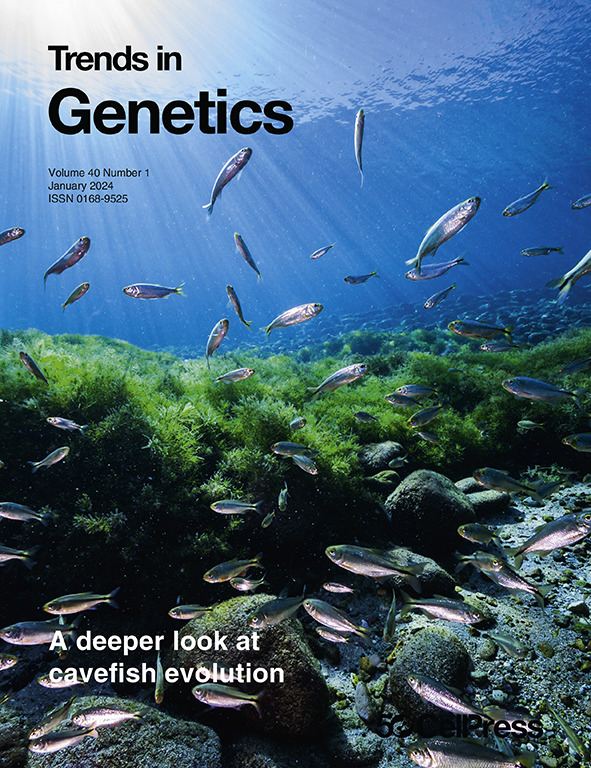Gene for eye placement comes into focus.
IF 13.6
2区 生物学
Q1 GENETICS & HEREDITY
引用次数: 0
Abstract
The Drosophila compound eye is an attractive system for unraveling how tissues are specified and patterned. Puli et al. recently demonstrated that eye size and spacing are controlled by the defective proventriculus (dve) gene. This impacts our understanding of hypertelorism, a disorder associated with mutations in special AT-rich binding protein 1 (SATB1), the human ortholog of Dve.
眼位基因成为焦点。
果蝇的复眼是一个极具吸引力的系统,可用于揭示组织是如何特定化和模式化的。Puli 等人最近证明,眼睛的大小和间距受胃缺损(dve)基因控制。这影响了我们对多视角症的理解,多视角症是一种与特殊富AT结合蛋白1(SATB1)突变有关的疾病,而SATB1是Dve的人类直向同源物。
本文章由计算机程序翻译,如有差异,请以英文原文为准。
求助全文
约1分钟内获得全文
求助全文
来源期刊

Trends in Genetics
生物-遗传学
CiteScore
20.90
自引率
0.90%
发文量
160
审稿时长
6-12 weeks
期刊介绍:
Launched in 1985, Trends in Genetics swiftly established itself as a "must-read" for geneticists, offering concise, accessible articles covering a spectrum of topics from developmental biology to evolution. This reputation endures, making TiG a cherished resource in the genetic research community. While evolving with the field, the journal now embraces new areas like genomics, epigenetics, and computational genetics, alongside its continued coverage of traditional subjects such as transcriptional regulation, population genetics, and chromosome biology.
Despite expanding its scope, the core objective of TiG remains steadfast: to furnish researchers and students with high-quality, innovative reviews, commentaries, and discussions, fostering an appreciation for advances in genetic research. Each issue of TiG presents lively and up-to-date Reviews and Opinions, alongside shorter articles like Science & Society and Spotlight pieces. Invited from leading researchers, Reviews objectively chronicle recent developments, Opinions provide a forum for debate and hypothesis, and shorter articles explore the intersection of genetics with science and policy, as well as emerging ideas in the field. All articles undergo rigorous peer-review.
 求助内容:
求助内容: 应助结果提醒方式:
应助结果提醒方式:


